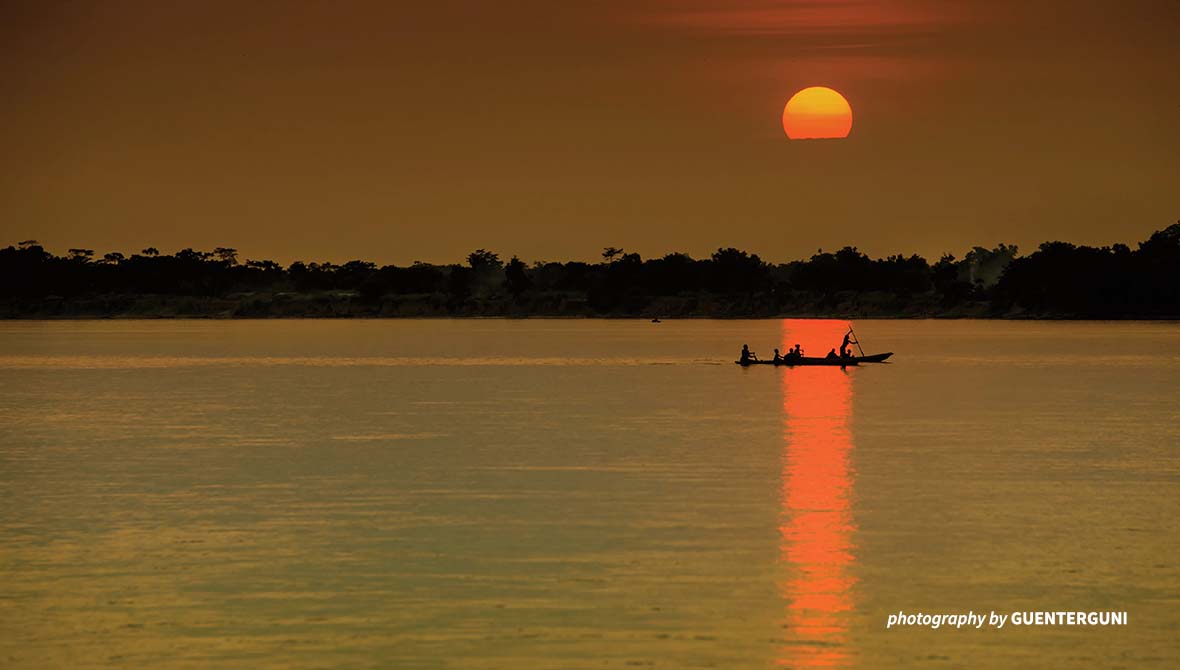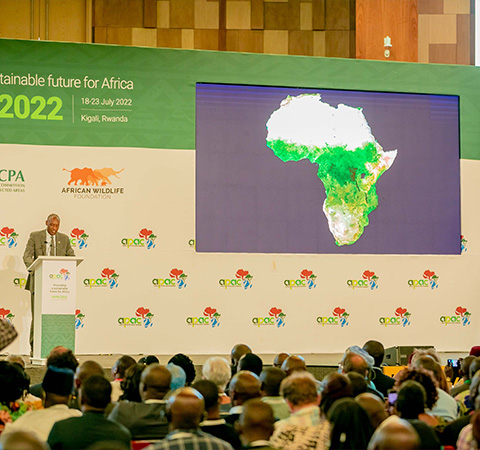Funding gaps in Africa’s protected areas call for bold solutions

The Congo Basin is Africa's largest forest-based carbon sink, second only to the Amazon.
An invisible threat looms over the vast majority of Africa’s 8,600+ protected and conserved areas, besides habitat degradation and fragmentation, climate change, and biodiversity loss: a lack of resources.
In 2020, COVID-19 laid bare the funding gaps that impede conservation. Government budgets were diverted to much-needed investments in healthcare and social support, and the lockdown forced a severe reduction of tourism revenue – an important additional source of funding for many protected areas. The pandemic exposed not only a vulnerability to disasters but also a crippling over-reliance on tourism as the main economic sector generating income for protected areas.
Some protected areas fared better than others due to conservation trust funds, which offer sustainability and resilience through reliable funding. Unfortunately, few of Africa’s conserved areas have access to such funding mechanisms.
“The situation was very dire in every country,” said Prof. Patience Gandiwa, Director of International Conservation Affairs at Zimbabwe Parks & Wildlife Management Authority. As co-chair of the Africa Protected Area Directors working group on protected area financing, she spoke with AWF at the meeting of protected area directors in November 2021 about the significance of solving this funding crisis.
“There is no country that can say it maintained its revenue streams during COVID… It was April 2020 when we actually confirmed what we already knew. We just didn't know exactly how much, but on average, over 80 percent of revenue that was meant to be generated by protected areas across Africa was lost.”
In some areas, said Prof. Gandiwa, that figure stood at 100 percent – no revenue at all.
Africa’s conservationists want to do the work, not search for funding
The problem goes deeper than disaster resilience and a lack of funds. For Prof. Gandiwa, it is also about African independence and leadership in conservation. Funding from external donors often comes with strings attached. Sometimes, these conditions are unhelpful, particularly when they are shaped with minimal on-the-ground insight. But for African conservation to succeed, it must be African-led.
“We just want to do the work,” she said. “We don't want to spend 90 percent of our time looking for funds and 10 percent doing the work, because now we have to do a lot of proposal writing. Believe me, it's an [arduous] and time-consuming and complicated process. And we are not schooled to be doing proposals to look for money. We are schooled to do ecology, to do science, to do management, to do conservation. To do the work, not to be looking for money.”
Sometimes, donors focus on charismatic wildlife over human needs – or over the interconnectedness between both.
“Our priorities could be actually buying boots for the rangers because we can't send them barefooted,” said Prof. Gandiwa. “The priority for the donor is to rescue some lions or buy an airplane to airlift a wounded rhino, when the rangers that are taking care of them do not have food.”

A-PACT was unveiled at the inaugural Africa Protected Areas Congress
How decimated conservation funding led to a bold plan
Prof. Gandiwa calls for protected area directors across Africa to work on innovating and scaling up conservation funding in a drastic way. And because these issues are transboundary – viruses, climate change, wildlife crime, and other threats do not tend to respect national and regional borders – African leaders of all countries need to put their heads together.
“The success of Africa will not only be seen in one country succeeding,” she said. “There are more benefits if we succeed together.”
“We realize that we need to have a mechanism that will make it easier for those donors that are making ambitious pledges with ambitious goals to help Africa – not in a piecemeal approach, but to help Africa’s diverse landscapes, wildlife, and habitats at a [continental] scale.”
And success on that scale is essential to the world. Global climate and biodiversity goals cannot be met without Africa’s protected areas. To name a few of the many benefits, these areas store over 60 gigatons of carbon; reducing deforestation and degradation would avoid tens of billions of dollars in annual climate-related social costs over the next decade.
These challenges have inspired a bold effort in the form of A Pan-African Conservation Trust (or A-PACT). Officially launched by former Prime Minister of Ethiopia, H.E. Hailemariam Desalegn, at the first-ever Africa Protected Areas Congress on July 18, 2022, A-PACT aims to expand access to funding across the continent’s entire protected and conserved area network and build up African leadership in conservation.
Through a widely consultative process guided by African Wildlife Foundation and the Consortium for African Funds for the Environment, A-PACT is taking the shape of an ambitious, innovative, hybrid financing mechanism – consisting of a core endowment, a revolving or sinking fund, and a private investment component – to secure the level of funding required for all of Africa’s protected and conserved areas.
A-PACT comes from the collective work of Africa’s protected area directors, who know the day-to-day struggle of securing sufficient and sustained funding for supporting the communities living in and around parks; for compensating the victims of human-wildlife conflict; and for investing in the research and science that helps us understand our natural systems and translate that knowledge into future medicines, technologies, and foods.
A-PACT could be the lifeline that protected and conserved areas desperately need to sustainably address both long-term natural crises and short-term challenges, while serving as a tool for green investment in Africa’s natural ecosystems.